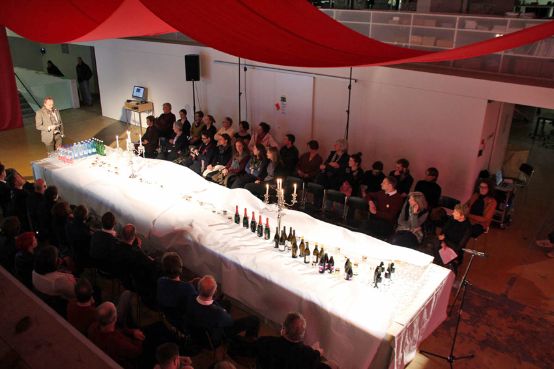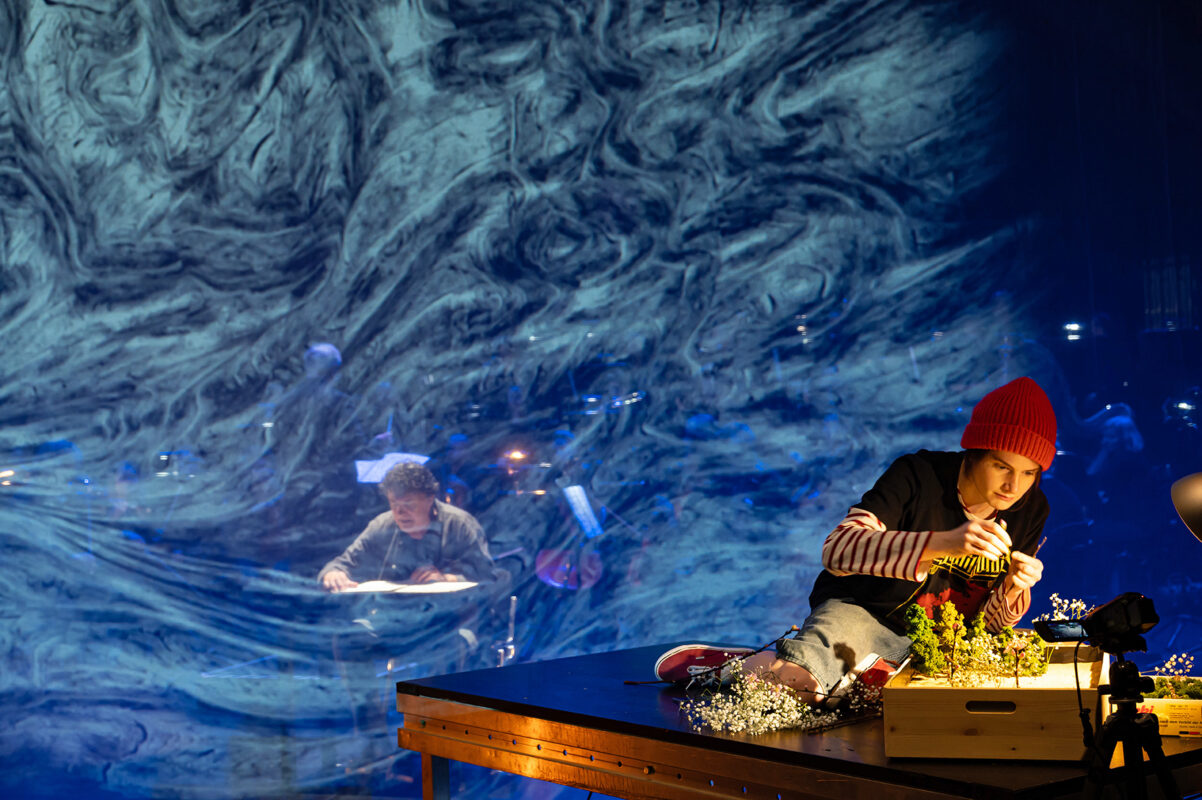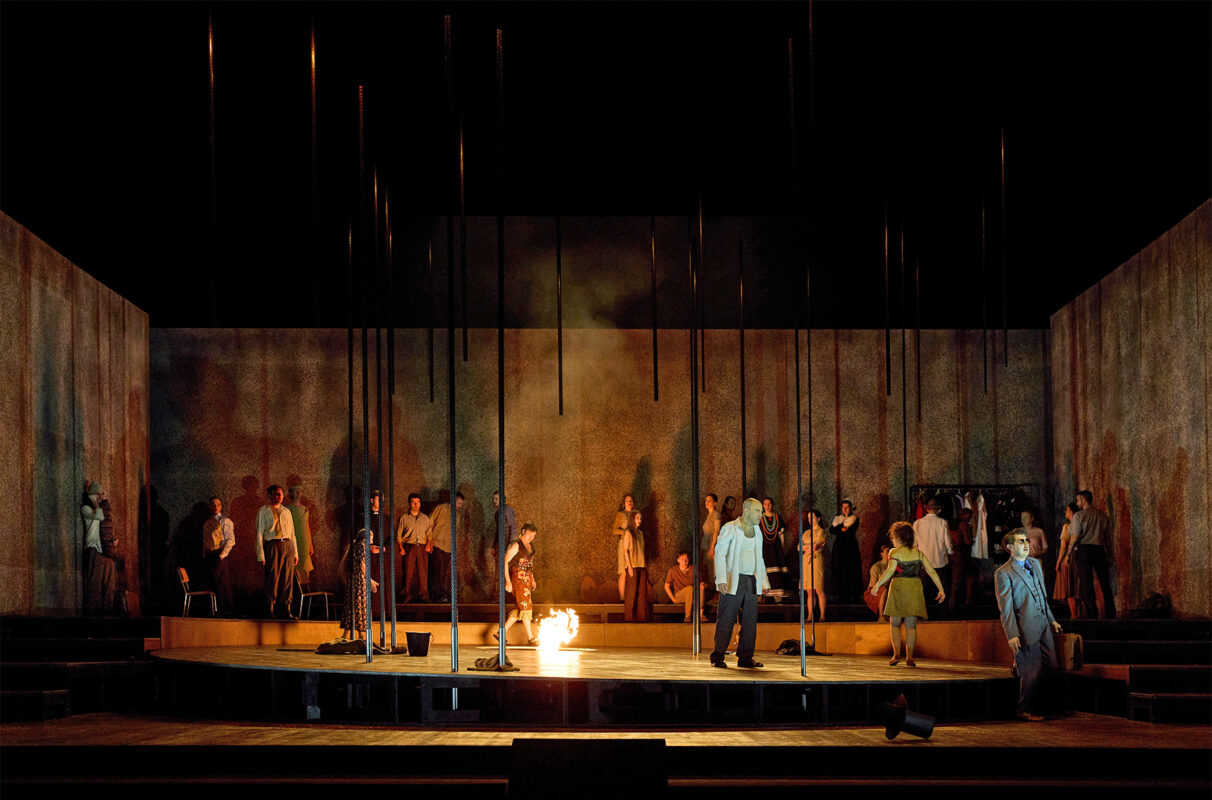Between art, modeling and empiricism
On November 29, the first doctorates were awarded at the Graduate School of the Arts in Bern - reason for a brief reflection on the strengths and weaknesses of artistic research.

Ten years ago, the foundation stone was laid in Bern for an unusual project: the Graduate School of the Arts (GSA), a university-based artistic dissertation program for art graduates from a university of applied sciences, namely the Bern University of the Arts (HKB). Now the University of Bern and the HKB - officially represented by Virginia Richter, Dean of the Phil. Faculty, and HKB Director Thomas Beck - have now celebrated the first GSA doctoral graduates with numerous guests. Roman Brotbeck metaphorically arranged the culinary buffet for the occasion - on the premises of the HKB in the outlying district of Bümpliz in Bern. Brotbeck is one of the initiators of the program; he co-directed the HKB in various functions until around four years ago. Another driving force was Anselm Gerhard, head of the Institute of Musicology at the University of Bern, who also brought his greetings to the ceremony. The event was hosted by Thomas Gartmann and Beate Hochholdinger-Reiterer. They alternate annually in the roles of chair and co-chair of the GSA.
The first GSA dissertations to be completed are by musician Immanuel Brockhaus, who has also been head of the MAS Pop & Rock at the HKB Bern since 2003, and graphic designer Julia Mia Stirnemann. Brockhaus investigated the question of "which individual sounds have shaped the history of popular music and continue to do so today". Stirnemann has considered how "unconventional world maps can be generated using a parameter-based and targeted approach", namely those that are not based on the equator as the authoritative great circle. The beneficiaries of such unusual representations could be schools, infographics or world travelers.
The techniques used by the two are tailor-made: Brockhaus filtered out twenty cult sounds from the first 40 of the Billboard Top 100 singles from 1960 to 2013, analyzed them in detail and described them - using methods from ethnomusicology, so-called Actor-Network Theory, and sound analysis. The centerpiece of Stirnemann's work is his own software. It is available on the web at worldmapgenerator.com.
With the GSA, the University of Bern and the HKB have ventured into difficult terrain in two ways: on the one hand, artistic research is still by no means generally accepted academically, and on the other, the question of whether a third cycle, i.e. a doctoral degree or PhD at universities of applied sciences, makes sense is still the subject of highly emotional debate. This is also demonstrated by a recent event at the Zurich University of the Arts (ZHdK): at a panel discussion on December 9 under the pertinent title "Gleichartig aber anderswertig?" (Similar but different?), representatives from German-speaking and French-speaking Switzerland, Austria and the UK will discuss topics relating to artistic research and alternatives such as the Austrian PEEK (Program for the Development and Exploitation of the Arts).
A kind of secular Gretchen question is how far artistic research can claim to be scientific. There is still hardly any consensus on this, as science is generally associated with modeling, experiments, attempts at refutation, replication and thus lines of research along more general theories. However, the work of Brockhaus and Stirnemann illustrates the individual character of artistic questions, even if it is conceivable that further work could dock onto their results.
It is possible that the academic quality of such work lies in the most careful possible presentation of a single phenomenon or fact. There are models for this in the early days of scientific thought, in the 18th and 19th centuries in the unconditional documentation of collected data or in individual case studies, which have fallen into disrepute in today's age of quantification and double-blind studies. The theory of science knows that even in the hard subjects of natural sciences and medicine, the boundaries between art, modeling and empiricism are quite fluid.
A random glance at the list of other GSA dissertation projects reveals the strengths and weaknesses of current artistic research: in music alone, it ranges from a look at the work of Swiss composer Hermann Meier to the history of guitar playing, Joseph Joachim's interpretation practice, creative processes in New Music, musical design ideals in the Liszt tradition, the rediscovery of the bass clarinet or the musical charisma of Einsiedeln Abbey in the 11th and 12th centuries. One spontaneously wonders whether such projects would also have room at a musicology institute without the establishment of a GSA. The inevitably seemingly random and certainly desired diversity does not help to sharpen the profile of the GSA.
The unique strength of the Bern GSA, the local proximity of the partners university and university of applied sciences, also appears to be a weakness. It allows the very different methodological and cultural traditions of pure and applied research to be brought closer together in an intensive dialog, something that seems urgently needed in the modern academic world. On the other hand, it threatens the image of self-sufficiency and provincialism. The fact that at present only Bernese Master's students can be formally admitted to a GSA program alongside those entitled to do a doctorate at the university reinforces the impression of homeland protection. (Graduates from non-Berne universities of applied sciences must obtain a specialized Master's in Research on the Arts awarded by the University of Berne). The situation is reversed in the case of the ZHdK, for example, where a partnership with the University of Graz underlines the international networking of modern research, but the productive areas of friction between the institutions of pure and applied research, which are so important, are likely to be significantly smaller.








